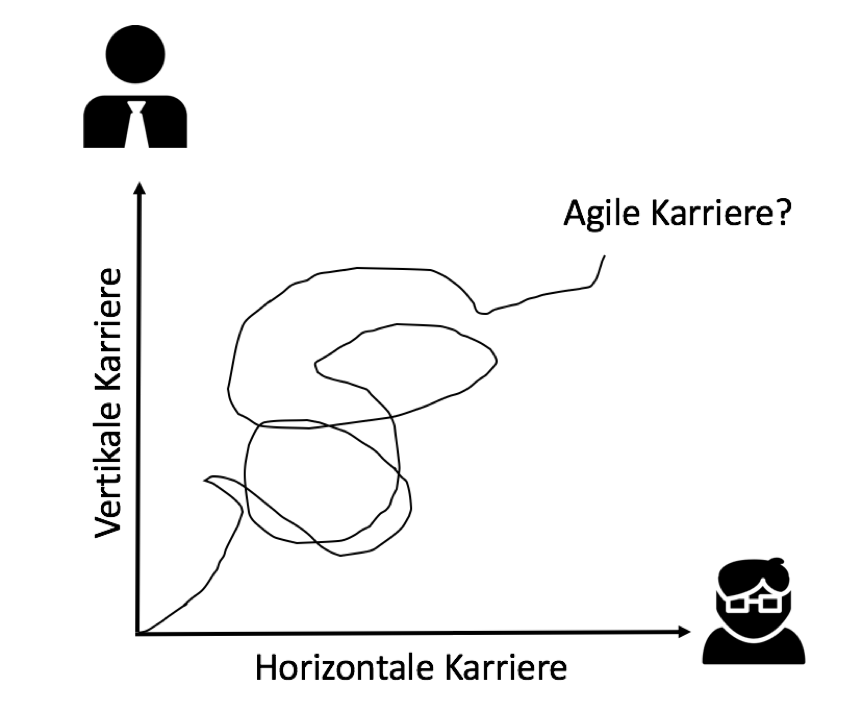“Where do you see yourself in 5 years?” – Well .. I would like to be the boss … This or something like that probably runs through a lot of thoughts that employees have. The vertical career carries a lot of prestige and is often associated with great success and income. But in times of agility and flat hierarchies there are far fewer management positions and so agile HR work is established, which has to establish an agile career in the company. But what is it?

Agile career
What actually is a horizontal career and is it also an agile career? Career bible says: “The horizontal career or Specialist career is characterized by the subject-specific development. ”
The problem is in the Computer week clear: Not everyone wants to be a manager and has an interest in spending his time on budgets, appraisal appraisals, and corporate policy skirmishes. In the IT environment in particular, there is a need to grow with technology and project topics and to position one’s own competence in the specialist world. Conversely, not every technically experienced employee is predestined to be an excellent disciplinary manager. The supervisor or the employee should recognize this themselves. This can easily lead to frustration because there are no other opportunities for advancement. The employee is then an internally recognized, but not an officially recognized expert in the company.
But what does it look like? There is a small example of this in the PM blog : For example, a career ladder for project and program managers might look like this:
- Project team member
- Project Assistant
- Junior Project Manager
- Project manager
- Senior Project Manager
- Program Manager
- Project Management Executive / Project Management Officer
Agile HR work
But why is the topic so relevant and why is it agile Personnel work necessary? This can be described in 2 words: Flat hierarchies. So says Andre Häusling in the Computer week : In agile companies, there are significantly fewer management positions with disciplinary personnel responsibility. Instead, there are more roles that require professional management of the employees. The managerial span of leadership increases, the leadership role changes. The decisive factor for employees is always the question of perspectives. They associate leadership with a higher salary and often see it as the only opportunity for a career. In the sense of the agile mindset, however, the success of an employee can no longer be measured by how many people report to him.
But what is the real problem? It all sounds easy! That’s how he puts it PM blog very well together: What sounds so simple and perhaps logical, is in reality a profound organizational and cultural change that has to take place in companies. And top management – as is so often the case – has to exemplify this change, actively support it and “punch through” against resistance.
Reading tip: Article on agile HR
So there is a lot of work for agile HR work and a cultural change in the mind is necessary. It will not be easy as an HR department to design and advertise an agile career and to get people excited about it. Especially when more and more experts are needed in times of digital change, such a career must be firmly anchored in the minds of employees! A permanent role change could be a best practice here. Maybe I’ll be a team leader for a few years and then a professional again to become a team leader again or I want to take it easy and just be a developer for a few years? There are certainly numerous approaches to an agile career. What are you aiming for?
[yop_poll id=”34″]
[werbung]
[fotolia]



